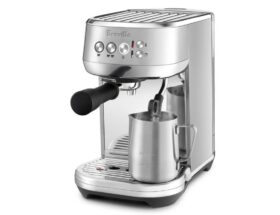
Non-homogenized Milk: Understanding the Differences and Benefits
In today’s specialty coffee world, the quality of your milk can make or break the perfect cup. This leads us to one crucial consideration: non-homogenized milk. But what exactly is non-homogenized milk, and how does it potentially affect your cup of joe?
Let’s dive into the world of coffee science, specifically looking at the milk’s fat content and stability of the foam. This will help us understand why non-homogenized milk, often synonymous with organic milk, may fall short in delivering that barista-quality milk foam we all love in our lattes and cappuccinos.
Table of Contents
Understanding How Milk Fat Content Impacts Foam Stability in your Coffee
In the quest for coffee perfection, understanding the science behind milk foam is vital. The key player here is the milk’s fat content.
Fat content directly correlates with the foam’s stability. Higher the fat content, more stable the foam. This is where non-homogenized (organic) milk often misses the mark, due to its larger fat droplets. These large droplets make the foam unstable, causing it to collapse faster.
Homogenized milk, in contrast, presents a different story. It undergoes a process that breaks down fat molecules into smaller, uniform sizes, leading to a stable, long-lasting foam. Especially in a coffee context, homogenized milk outperforms its non-homogenized counterpart in delivering that velvety milk foam that elevates your cup.
Thus understanding and choosing the right milk is instrumental in achieving that sought-after barista-quality coffee.

Non-homogenized Milk vs. Homogenized Milk
Now that we’ve dissected the science behind milk foam, it’s worth examining the comparison between non-homogenized and homogenized milk. Both have their merits in terms of health benefits and sustainability, but in terms of perfecting your coffee, one clearly has the upper hand.
All things considered, pieces of evidence stack up in favor of homogenized milk. Its smaller, uniform fat droplet size due to the homogenization process allows for consistently stable foam.
Unfortunately, for non-homogenized milk, the large fat droplet size results in unstable foam and a quick collapse. Since non-homogenized milk is often marketed as organic milk, it can cause confusion and unexpected disappointment for coffee lovers seeking the best ingredients without knowing its limitations.
It’s essential to understand these differences to cater to your coffee experience. Despite non-homogenized (organic) milk’s cardiovascular health benefits and richer, creamier taste, when it comes to achieving optimal lattes and cappuccinos, homogenized milk tends to hold the edge.
| Homogenized Milk | Non Homogenized Milk |
|---|---|
| Smaller, uniform fat droplets | Larger, non-uniform fat droplets |
| Long-lasting, stable foam | Unstable foam, collapses quickly |
| Optimal for lattes, cappuccinos | Richer creamy taste |
| Commonly available | Marketed as organic |
Troubleshooting Your Milk Foam
Even with knowledge of homogenized milk’s superiority in creating stable foam, certain factors can still pose challenges to achieving that perfect coffee.
One obstacle can be the physical handling of the milk during transport. Vigorous shaking can rupture the milk’s fat droplets, releasing excessive fatty acids, subsequently leading to collapsing foam in your coffee.
Another culprit can be residual soap or detergent from the milk jug. Such substances disrupt the surface tension between air bubbles in the foam, causing instability and eventual collapse.
These mishaps can be prevented by ensuring gentle handling of the milk from farm to table and thoroughly rinsing any soap residues from your milk jugs.
Armed with these tips and the right choice of milk, you’re well on your way to creating consistent, barista-quality milk foam for your coffee.
Five Top Tips for Perfect Milk Foam
- Choose the Right Milk: Opt for homogenized milk to get smaller, uniform fat droplets and a consistent, long-lasting foam.
- Avoid Shaking the Milk: Ensure the milk is handled gently during transport to prevent fat droplets’ rupture and fatty acids release, which can lead to a collapsing foam.
- Clean Your Equipment Properly: Soap or detergent residues from the milk jug can disrupt the foam’s surface tension, causing it to collapse quickly. Use hot water and thorough rinsing to ensure all soap residues are removed.
- Temperature Control: Warm your milk to between 60-70 degrees Celsius (140-158 degrees Fahrenheit) before frothing. This is the ideal temperature for creating dense, creamy foam.
- Practice Frothing Technique: Mastering the balance between introducing enough air (for volume) and not too much (which creates large bubbles and weakens the foam) is crucial for creating perfect milk foam. Practice makes perfect! Check out our frothing help guide.
The Final Verdict on Non-homogenized Milk
As we’ve journeyed through the science of milk foam, from fat droplet sizes to the little-known impacts of transport and soap residues, we can conclude that milk selection plays a crucial role in achieving perfect coffee.
Despite non-homogenized organic milk’s health benefits and creamy taste, if coffee perfection is your aim, homogenized milk stands as the clear winner. Its small, uniform fat droplets lead to a consistent and stable foam that lasts, elevating your lattes and cappuccinos.
While technicalities can be intimidating, armed with these nuggets of knowledge and the five key tips listed above, you are well-equipped to make an informed choice.
Here’s to better understanding, wiser choices, and ultimately, a better cup of your favorite coffee.








